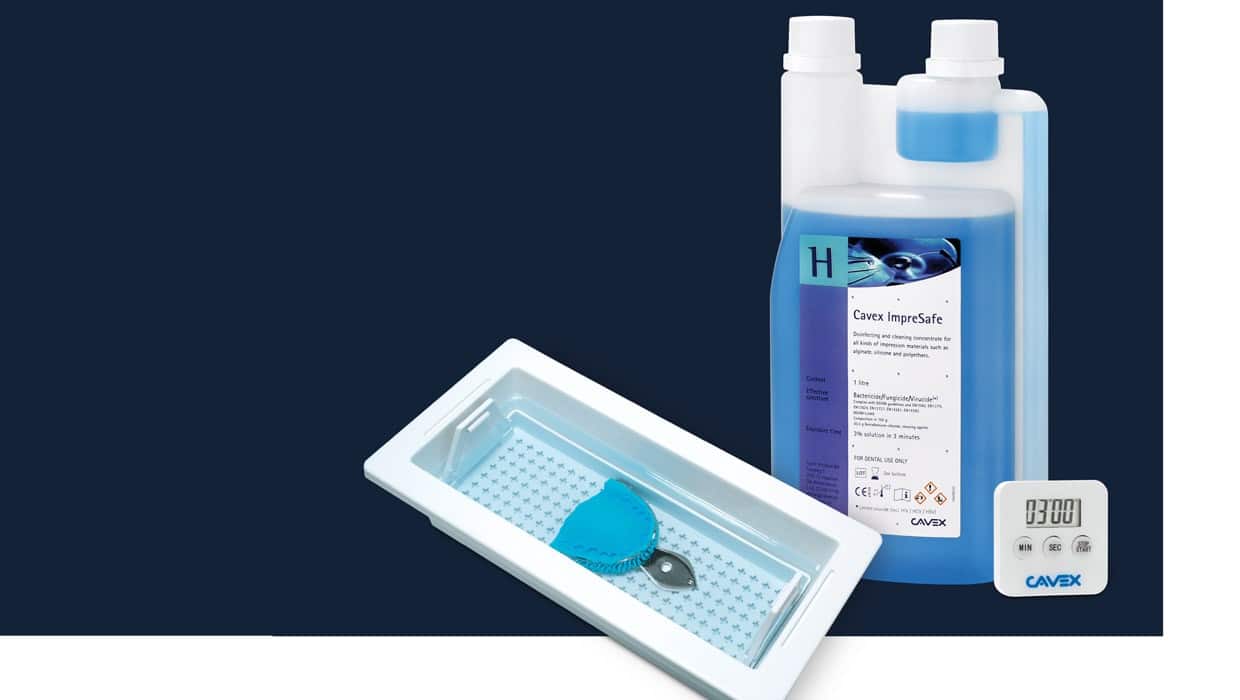Impressions and dental workpieces that have been in your patient’s mouth have been exposed to saliva, other organic material and possibly blood. This poses a risk of infection. The guideline is clear on this. You should thoroughly rinse and then disinfect the impressions to reduce the number of micro-organisms to an acceptable level. How can you disinfect your impressions safely and quickly in the dental practice?
 Back in the days
Back in the days
About 350 BC it was discovered that life arose from rotting food. After that, it went one step further. In the 19th century it was discovered that micro-organisms can cause diseases. In the same period, Louis Pasteur discovered that it was possible to kill bacteria by pasteurizing. Brief heating makes it possible to destroy harmful bacteria in perishable products. This does not destroy all micro-organisms, but the number is reduced to a safe level that normally prevents them from causing disease.
What infection hazards do we encounter in practice?
Microorganisms exist in a wide variety in our normal flora. Many are non-pathogenic. Some bacteria are pathogenic. The growth of these pathogenic bacteria depends on temperature, pH, oxygen, water and nutrition. Within oral care and dental technology you can come across bacteria, viruses and fungi. The discovery of antibiotics in the 20th century has accelerated the fight against bacterial infectious diseases. What about viruses then?

Control-alt-delete?
Viruses spread quickly. Unfortunately, it is not possible to treat these with antibiotics or medication. Only a vaccine can help with that. We also know that viruses can mutate into new variants. For instance the British and Delta variant. Influenza is still the most common virus. Other viruses include: hepatitis, HIV and herpes (cold sores).
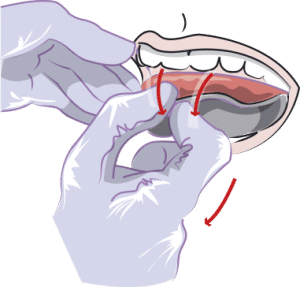 Spread of micro-organisms
Spread of micro-organisms
The transfer of micro-organisms can take place both directly and indirectly. Skin contact is an example of direct transmission. However, it can also be spread indirectly through water, blood or saliva. This can also occur through instruments or impressions. This is certainly conceivable within oral care and dental technology. How should you deal with that?
Guideline Infection Prevention in Dental Practices
This guideline states that you must always disinfect an impression before it is sent to a dental laboratory. The dentist is responsible for disinfecting the impression. This means that you must immerse the entire impressions in a disinfectant solution. This is important, because many impression materials are hydrophilic. As a result, they can also easily contain the wrong micro-organisms. It is therefore very important that you destroy these before the dental laboratory starts casting the impressions. In addition, you also protect the employees in the dental laboratory against contamination with micro-organisms. The guideline (KNMT, 2016 – page 88) advises to use chlorine tablets for disinfection. Impressions that are contaminated with blood should be disinfected with 1,000 ppm chlorine. But is this also the best for your impressions?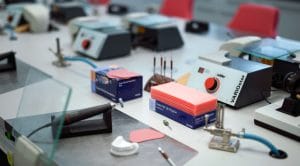
Impression materials and moisture absorption
Zooming in on the impressions themselves, these are often made of polyether impression material or alginate. Both impression materials are hydrophilic. When it comes to alginate impressions you get a nicer impression by having your patient rinse with water beforehand. However, the absorption of moisture is not desired when you disinfect the impression. This can cause deformation of the impression, which may cause the final workpiece to no longer fit. The Guideline infection Prevention recommends using chlorine to disinfect impressions. However, there are disadvantages to this, especially for the dental laboratory that wants to cast the impressions.
- Chlorine is ineffective if there is blood on the impression
• Chlorine creates air bubbles during pouring
• Chlorine softens the surface of the plaster model
• Chlorine affects detail production reducing accuracy
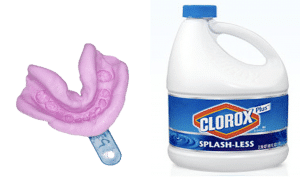 Disinfection with alcohol is certainly not suitable. A laboratory is allowed to disinfect the workpiece made afterwards with alcohol of at least 70%. However, this is more hygienic cleaning. Are there alternatives to disinfection with chlorine
Disinfection with alcohol is certainly not suitable. A laboratory is allowed to disinfect the workpiece made afterwards with alcohol of at least 70%. However, this is more hygienic cleaning. Are there alternatives to disinfection with chlorine
Disinfect with the proven and effective Cavex ImpreSafe
The main goal is to disinfect your impressions in the shortest possible time without damaging them. To disinfect your impressions safely and quickly, use the proven and effective Cavex ImpreSafe. The active ingredient of the liquid is Quaternary Ammonium Compound (benzalkonium chloride). This is a mild and at the same time very efficient disinfectant. In addition, Cavex ImpreSafe contains active substances and other additives that offer a high cleaning activity and at the same time are gentle on the impression materials. These ensure that the surface tension of the impressions is reduced. This allows the disinfectant to come into contact with the impressions faster. An extra addition of a so-called booster ensures that the entire process runs faster. The impression can therefore remain in the disinfection bath for the shortest possible time. In a solution with 3% Cavex ImpreSafe it takes only 3 minutes to achieve a log 4 or log 5 reduction. This means that your impression is disinfected in 3 minutes. How does it work then?
Working method Cavex ImpreSafe 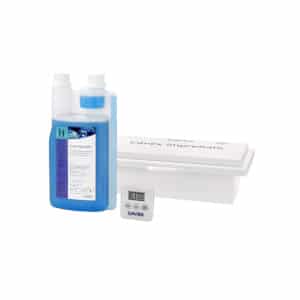
The Cavex ImpreSafe Starter Kit contains a container.
1) Fill the container with a liter of water
2) Dose 30 ml of Cavex ImpreSafe with the measuring cup integrated on the bottle
3) Add 30ml Cavex ImpreSafe to the water
4) Carefully rinse your impression under running water to wash away all visible contamination
5) Place the impression in the tray and lower it into the container
6) Set the included timer to 3 minutes
7) Rinse the impression carefully again under running water
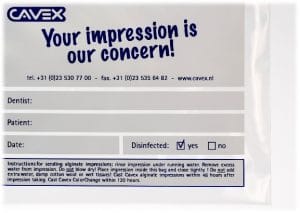
Shipping to the dental laboratory
The Cavex ImpreSafe starter kit also contains zip-lock bags for shipping.
1) Tap off the excess water
2) Put the impression in a bag
3) Close the pouch carefully
4) Mark the ‘disinfected’ box
Tip of the day: Store your impression at room temperature, never put it in the refrigerator. You also don’t need to add wet cloths of cotton rolls. This can cause permanent deformation, which means that the final workpiece may not fit accurately.
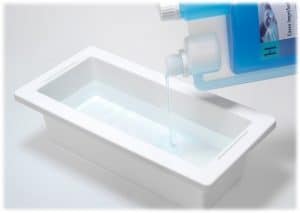
Why disinfect with Cavex ImpreSafe?
You can use Cavex ImpreSafe for all types of impression material. It has no adverse effects on other materials or metals. There are many types of disinfectant materials with different compositions on the market. Compared to other products, the contact time of Cavex ImpreSafe for three minutes is much shorter than the reaction time often associated with other liquids. Absorption of moisture starts immediately after immersion. It is therefore important that you use the timer and switch it on for three minutes. This prevents extra moisture absorption and possible deformation of your workpiece. The additions to Cavex ImpreSafe ensure that its operation is accelerated and improved. A longer exposure time can provide extra moisture absorption. Due to the swelling, this affects your final workpiece, which might not fit anymore. The shorter the exposure time, the safer. This keeps your workpiece stable and preserves the fine details. Then why is it so effective?
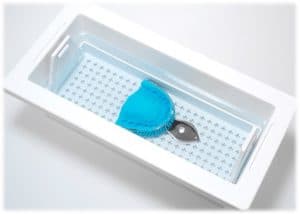 Effectiveness Cavex ImpreSafe: log 5 reduction in 3 minutes
Effectiveness Cavex ImpreSafe: log 5 reduction in 3 minutes
Looking at the effectiveness of the disinfection, Cavex ImpreSafe is able to achieve a log 5 reduction in 3 minutes. Log 4, means that 99.99% of the requirements for disinfecting bacteria have been met. One step further, log 5, means that 99.999% of the requirements for disinfecting fungi and viruses have been met. Effectively, this means that the number of micro-organisms is reduced to a safe level. This means that Cavex ImpreSafe disinfects the most common bacteria, viruses and fungi that can occur in the dental practice for at least 99.99% in 3 minutes. What about the Corona virus?
 Cavex ImpreSafe has been proven effective against Corona!
Cavex ImpreSafe has been proven effective against Corona!
To test the virus-inactivating effect of Cavex ImpreSafe against the Coronavirus, the ‘Feline Coronavirus’ was used. This virus causes Feline Infectious Peritonitis (FIP). This is known to be fatal to cats. Viroxy Labs in Malaysia, a laboratory specializing in microbiology and ISO17025 accredited, conducted the tests. For this test a quantitative suspension test was used according to EN14476:2013 + A1:2015 standards under both clean and dirty conditions. The tests confirmed the effectiveness of Cavex ImpreSafe against the Feline Coronavirus, as the results exceeded a log 4 (99.99%) reduction after the test samples were immersed for 3 minutes in a 3% solution of Cavex ImpreSafe. Based on this additional report and the previous virus test results, we can conclude that Cavex ImpreSafe is effective against the Covid-19 Coronavirus.
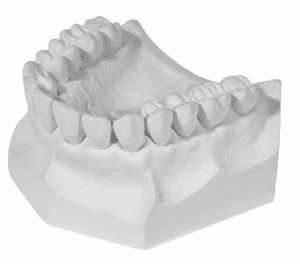 Prevent deformation of your workpieces and disinfect with Cavex ImpreSafe!
Prevent deformation of your workpieces and disinfect with Cavex ImpreSafe!
In a disinfection bath with a 3% solution of Cavex ImpreSafe it only takes 3 minutes to achieve a log 4 / log 5 reduction. This means that the number of micro-organisms has been reduced to a safe level. The short processing time of Cavex ImpreSafe ensures that your impression is disinfected in three minutes. This prevents deformation of your final workpiece and preserves fine details. Do you also want to disinfect your impressions safely and quickly? From now on, disinfect them with the proven and effective Cavex ImpreSafe.
Click here for more information on Cavex ImpreSafe.
